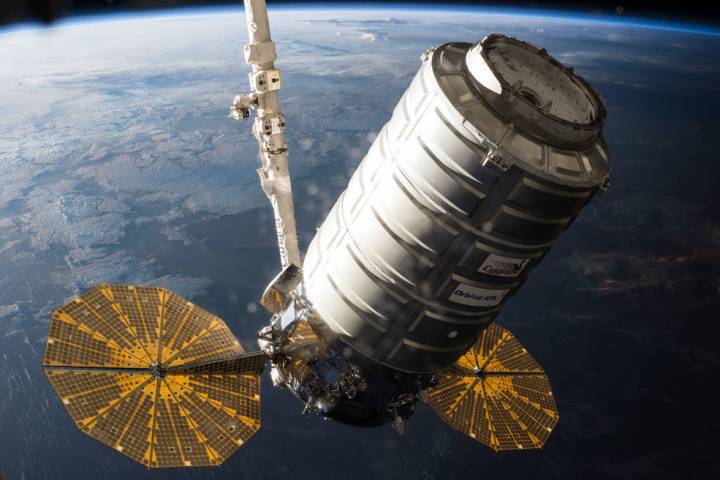
The detachment procedure was carried out mainly by NASA controllers back on Earth though ISS astronauts Tim Kopra and Tim Peake also offered some assistance during the operation.
Five hours after leaving the space station, NASA set the ship alight. No, this wasn’t a deliberate attempt to speedily dispose of Cygnus but instead part of an experiment that could help space missions both now and in the future.
Called Saffire-I, the experiment gave NASA a chance to study the effects of a realistic fire on a spacecraft. “This hasn’t been possible in the past because the risks for performing such studies on crewed spacecraft are too high,” it said in a release.
The space agency said instruments aboard the Cygnus measured flame growth, oxygen use and more, with the results hopefully leading to discoveries regarding microgravity flammability limits for various spacecraft materials. The findings could also validate NASA’s material selection criteria, and offer better understanding about how microgravity and limited oxygen affect flame size.
NASA said the experiment, which took place inside an insulated compartment within the cargo ship, was “crucial for the safety of current and future space missions.”
But despite being ejected from the ISS and set on fire, Cygnus’s work still isn’t done, as its final task is to release five Lemur CubeSats from an external deployer on June 20. These will form part of a remote sensing satellite constellation that provides global ship tracking and weather monitoring.
A couple of days later, however, Cygnus will experience an altogether more serious burning sensation as it disintegrates upon re-entering Earth’s atmosphere somewhere high over the Pacific Ocean.
Among Cygnus’s cargo, delivered to the ISS in March, was a zero-gravity 3D printer for astronauts to print tools for use on board the station. As the printer technology advances, it should help shrink the size of consignments carried to cargo ships to astronauts in space, improving efficiency while at the same time opening up a range of possibilities for space companies planning future missions.
“With an onboard printer, you can build things you could never deliver – like an antenna the length of a football field that supplies broadband internet to the whole world,” Spencer Pitman, who helped develop the 3D printer, said earlier this year.
Editors' Recommendations
- NASA’s record-breaking astronaut arrives home safely
- Chocolate mousse in space is more important than you think
- Space station’s new robotic arm springs to life
- Watch SpaceX’s Crew-4 astronauts arrive at new home in space
- How to watch SpaceX Crew-4 astronauts launch to ISS


